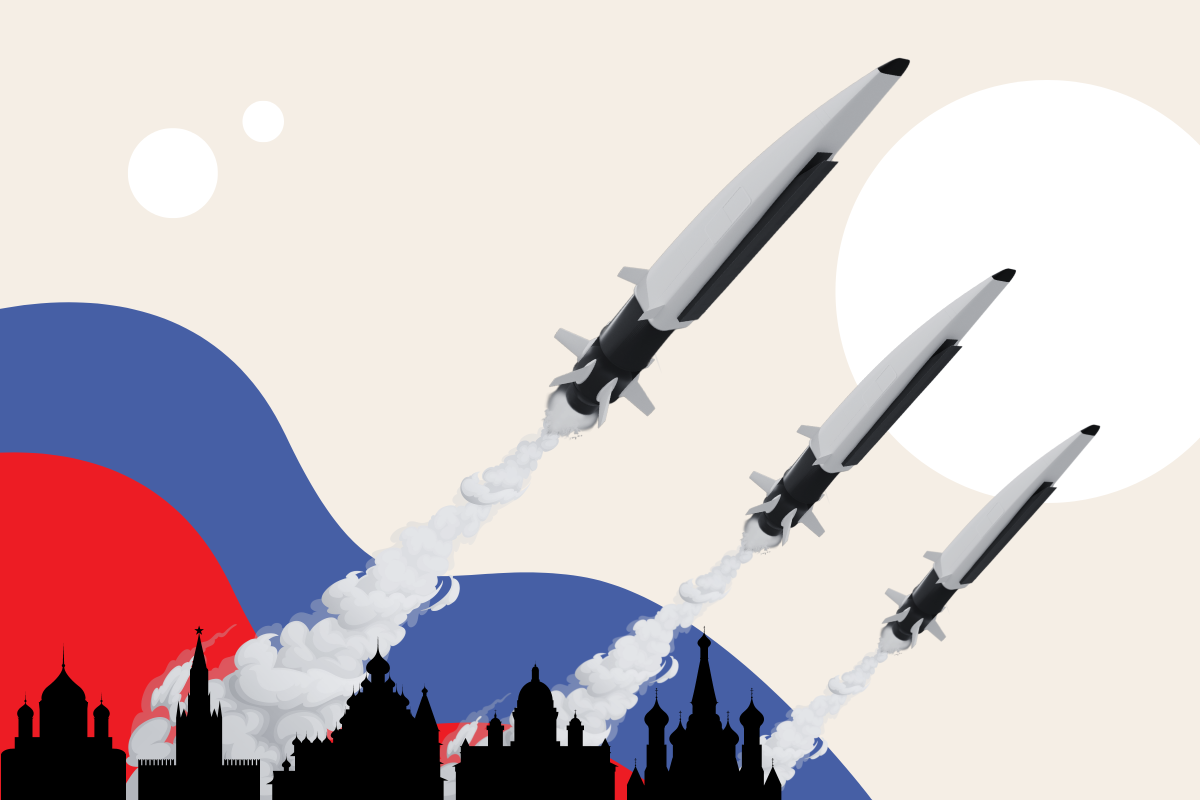Ellie Cook
Russia has hammered Ukraine with its hypersonic missiles throughout the more than two years of full-scale war in the country. But Moscow is walking a fine line, testing out its new capabilities while trying not to give away a blueprint for how Russia's adversaries could best defend against them.
Kyiv's military has often reported Kinzhal missiles heading for its territory and has said its air defenses can shoot down the supposedly unstoppable weapons. In mid-February 2024, a Ukrainian state-backed think tank said it had recovered fragments of a Zircon, or Tsirkon, hypersonic missile.
This was thought to be the first use of a Zircon in the war-torn country. Both the Kinzhal and the Zircon were among the "super weapons" unveiled by Russian President Vladimir Putin in 2018.
But firing these hypersonic weapons in Ukraine is a gamble for the Kremlin. Their use furnishes Moscow with a larger arsenal and an opportunity to test its "next-generation" systems, but it also allows Russia's adversaries, like the U.S. and other NATO countries, a better look at their capabilities in a combat environment.

Kyiv has reported throughout the war that Russia has fired hypersonic weapons at Ukraine. But experts suggest that while Russia gains valuable experience from testing the "next-generation" missiles, Moscow is also giving away vital knowledge to its adversaries.
"We're learning a lot from the operational use, successes, lack of success," said William Alberque, director of strategy, technology and arms control at the International Institute for Strategic Studies (IISS) and a former NATO official. It is "astonishing" that Moscow is using some of its most advanced systems, intended to threaten NATO, and that Russia is "providing us with an opportunity to learn so much about them."
"It's a massive calculated risk," Alberque told Newsweek.
Russia has flaunted its hypersonic weapons, but Western experts have suggested the term is problematic — analysts often veer towards calling the Kinzhal an air-launched ballistic missile. A truly hypersonic weapon can maneuver at high speeds, but many ballistic missiles can travel at above Mach 5, or five times the speed of sound.
In theory, combining speed and maneuverability at low altitudes "makes their flight path highly unpredictable and therefore more difficult to intercept compared to ballistic missiles" that move in more predictable trajectories at higher altitudes, said Federico Borsari, of the Center for European Policy Analysis (CEPA) think tank.
But Ukraine has said several times that it has intercepted Russia's hypersonic weapons using U.S.-made Patriot systems. Russia's firing of Kinzhal missiles in Ukraine has shown to its competitors that speed and range "substantially decrease while maneuvering," and the Kinzhal ultimately becomes vulnerable to advanced air defenses, Borsari said.
"Contrary to much of the hype surrounding hypersonic missile technologies, such weapons have not had any major—let alone decisive—impact on the war to date," said James Black, assistant director of defense and security at the European branch of the RAND think tank.
"If they turn out to work not as well as intended, it is quite a blow to Russia," added Fabian Hinz, research fellow for defense and military analysis at the IISS. Because Moscow has marketed these missiles as invulnerable to Western defenses, the stakes are higher when pitting the weapons against the likes of the Patriot, he said.
But aside from the publicity fallout when they are intercepted, Russia can also use the experiences of firing the missiles in Ukraine to work out how to improve them against Western air defenses, he told Newsweek.
The same principle applies to the international onlookers, who can learn how best to design air defenses to take down these next-generation hypersonic weapons.
"Seeing them used in combat conditions is both very useful to those who want to develop these weapons and those who want to defend against them," said Hinz.
"Certainly testing it can give hints to Russia on what didn't go as planned or what are the shortfalls," agreed Borsari. "They can gather information on how they were intercepted."
"But this also works for Ukraine and Western allies," he added to Newsweek. "They can see the performance of air defenses and gather data on the missile."
The war in Ukraine has also pulled back the curtain on North Korea's ballistic missiles, and how the secretively developed weapons operate in combat zones. Exposing the performance of Russian, North Korean or Iranian missiles is "going to inform us for the next decade of designing defenses," said Alberque.
The U.S. has not fielded hypersonic weapons, sidelining them because of the cost and questions over how much they add to Washington's capabilities.
Russia's use of hypersonic weapons shows Moscow is keen to test new technologies and learn from the conflict, Black told Newsweek, but it also highlights that Russia is feeling the strain on its stockpiles of other, cheaper precision munitions.
No comments:
Post a Comment